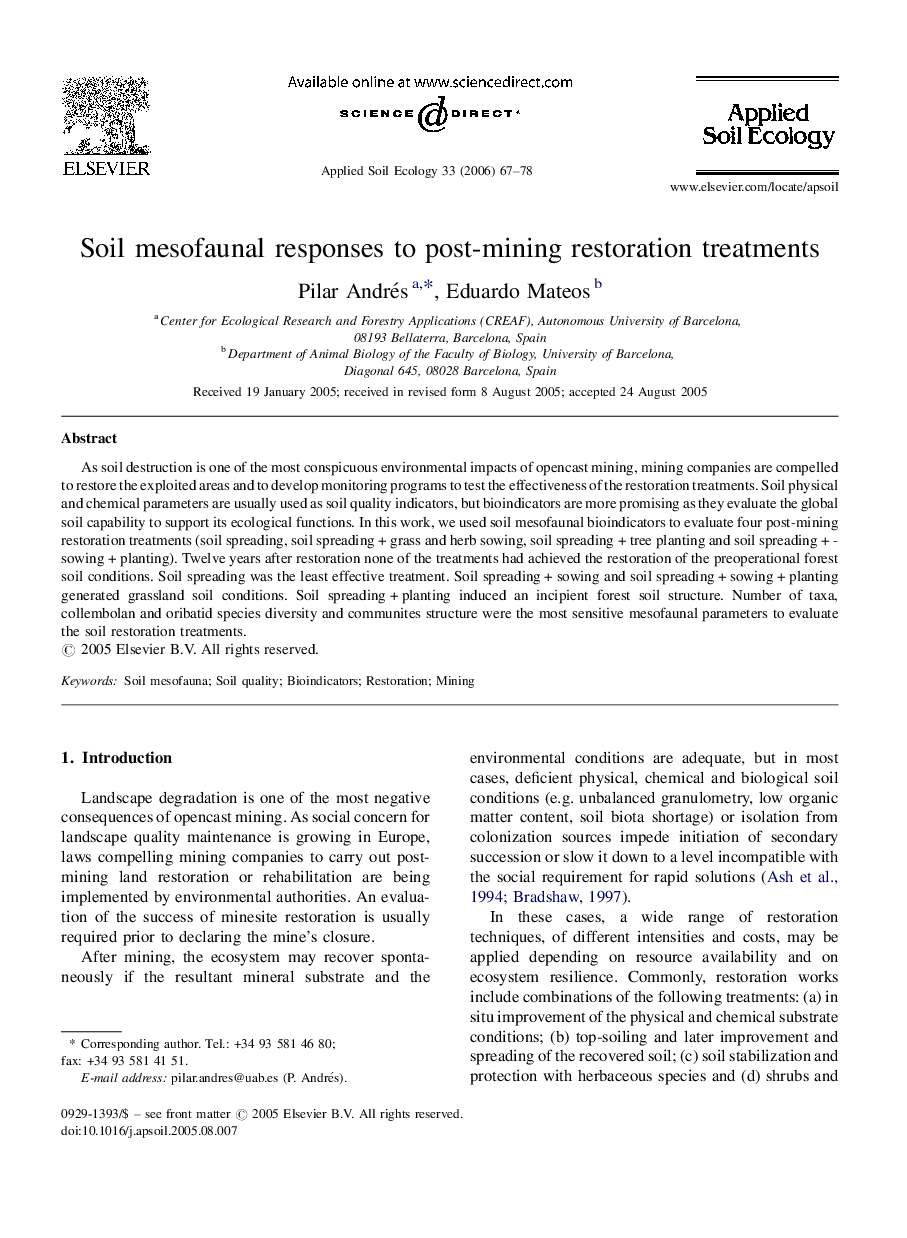| Article ID | Journal | Published Year | Pages | File Type |
|---|---|---|---|---|
| 4383311 | Applied Soil Ecology | 2006 | 12 Pages |
As soil destruction is one of the most conspicuous environmental impacts of opencast mining, mining companies are compelled to restore the exploited areas and to develop monitoring programs to test the effectiveness of the restoration treatments. Soil physical and chemical parameters are usually used as soil quality indicators, but bioindicators are more promising as they evaluate the global soil capability to support its ecological functions. In this work, we used soil mesofaunal bioindicators to evaluate four post-mining restoration treatments (soil spreading, soil spreading + grass and herb sowing, soil spreading + tree planting and soil spreading + sowing + planting). Twelve years after restoration none of the treatments had achieved the restoration of the preoperational forest soil conditions. Soil spreading was the least effective treatment. Soil spreading + sowing and soil spreading + sowing + planting generated grassland soil conditions. Soil spreading + planting induced an incipient forest soil structure. Number of taxa, collembolan and oribatid species diversity and communites structure were the most sensitive mesofaunal parameters to evaluate the soil restoration treatments.
